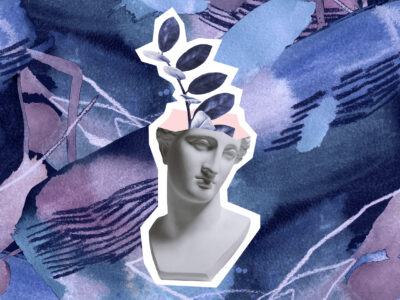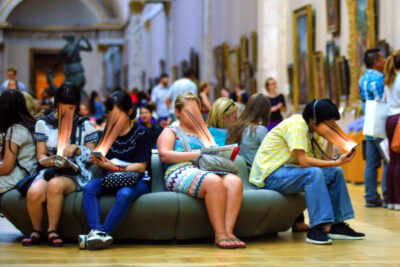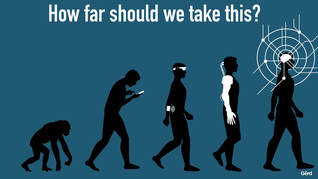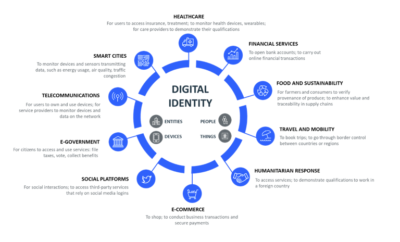
Whether you’re creative as part of a little hobby, a way of life, or somewhere in between, you probably consider creativity to be a force for good in your life. But when you also live with chronic illness, it’s not always easy to draw, write, cook, knit, build, or participate in whatever expressive outlet you love.
That’s not to say creativity and chronic illness are totally incompatible. Plenty of people see their passions and hobbies as essential to their self-care routine, and others use their condition to inspire their work. At the same time, a lot of the symptoms and practicalities associated with managing an illness don’t exactly vibe with making things. Brain fog, pain flare-ups, mobility issues, fatigue, medication side effects—whatever you deal with, you’re not alone if you find that navigating a mix of mental and physical obstacles can get in the way of your creative efforts.
To help you bring more creativity to your life, I asked people for their best advice for others in similar boats and even tossed in a few tips from my own experience. Since both chronic illnesses and creative practices vary far and wide, not everything will apply to everyone, so take what you like and leave the rest. Whatever’s blocking your flow, here are a few ways to stay inspired.
- Follow artists and other sources of inspiration on social media.
“I follow a lot of poets, artists, and crafters via social media, blogs, and newsletters,” Siobhan Moore, 39, tells SELF. “At times it can be hard not to make comparisons about how much they’re doing when I feel useless, but most of the time I’m able to keep a mindset of learning and inspiration when I look at their processes and results.”
Moore also recommends following museums, art centers, and accounts related to architecture, nature, music, and dance. “All art, I believe, is interconnected, and everything can and should be inspiration for your creative mind regardless of the medium,” she says.
- Journal through all the feelings.
“I do a lot of journaling that overflows into my work, especially when I have bad flare-ups,” Jana, 27, tells SELF. “When I start working on things, a lot of the inspiration is taken from that.” If the idea of starting a whole ~journaling practice~ just stresses you out more, consider options you may find less physically and mentally taxing. These guided journals are full of prompts to get you going, and plenty of journaling apps and other alternatives let you log voice memos and photos instead of written entries.
- And scribble down all the ideas.
Moore recommends lists. Lots and lots of lists. “Even when I can’t make art, I can jot down ideas, I can bookmark websites, poetry, articles to go back to for research later,” she says. “I can try and take a pile of disjointed thoughts jotted down and organize it slowly.”
- Get creative (lol) about finding a new creative outlet.
After developing lasting symptoms following a COVID infection two years ago, Emma, 34, realized that concentrating on the intricate work of cross-stitching triggered her fatigue. Around the same time, she got into watching paint-pouring videos and decided to try it for herself—only to find it was a much better match for her needs.
“Trying something new creatively was helpful for me mentally as I dealt with my new normal,” she tells SELF. “I found that I hadn’t lost all avenues to being creative, and I found comfort in that.”
- Break activities down into steps you can spread out.
Even after you find the right fit, there will still be instances when you need to scale back. At that point, Emma recommends spreading it out over a few days, like mixing paints one day and pouring the next. “If I was absolutely too tired to even mix paint, I could plan the next painting and think about what colors I wanted to use to keep my creative juices flowing,” she says. “It’s really empowering to make my artwork with my energy levels instead of against them.”
- Organize your supplies so they’re easy to access or store.
For me, the activity itself often isn’t the hurdle I need to overcome—it’s the setup and cleanup! I can’t tell you how many times I got out all of my supplies, had a grand ol’ time making things, and then had to suffer the mess for days as I waited for another burst of energy to put it away. On the other hand, I’ve probably had the passing urge to create something, like, a million times, only for it to float away in the wind because I’m too tired to go digging in my closet for what I need.
My solution? Little caddies. I have a few stocked with everything I need for a particular activity, like my writing caddy filled with pens, my go-to journals, notecards, sticky notes, and other goodies, making them easy to grab from my desk or closet when the mood strikes.
- Try literal art therapy.
Whether your chronic illness is a mental condition itself or requires managing your mental health in some other way, art therapy can be an awesome method of doubling up on self-care and creative play. “I actually started seeing an art therapist when I was dealing with a lot of frustration around my illness and how it was impacting my writing,” Valeria, 28, tells SELF. “It wound up being good on both fronts. It loosened my creative muscles via a new medium that wasn’t words, and it also gave me an outlet for exploring how I felt about my condition and how it had changed my life.” No need to run out and get an art therapist either (unless you want to)—you can start by trying out some at-home art therapy exercises.
- When you don’t have the mental space to be creative, work on mindless tasks that will pay off later.
When Moore is struggling with motivation, she focuses on undemanding jobs on her to-do list. “Sometimes simple things like untangling embroidery thread and organizing it can set me up for my next project, even when I’m struggling with motivation.”
- Lean into small acts of everyday creativity.
“Doing something creative every day, like regular joyful movement and getting out to see friends, helps me manage my emotional response to chronic pain and flare-ups, which in turn makes the pain lessen or at least feel more manageable,” Kelsey, 30, tells SELF. “Knowing that I’ll probably feel better if I spend time being creative—because it is a reminder that I am a person with hobbies and interests and talents, not just a body stuck in pain—is a real motivator for me.”
- And scale things down when needed.
“Flexibility in how I am creative on a day with a larger pain flare-up is important,” Kelsey says. “Maybe I feel up to drawing and painting for 15 to 30 minutes at home instead of trekking out to paint for a longer session on-site. Or I might feel up to a quick sketch instead of the repetitive movements of cross-stitching.”
- Try to worry less about finishing everything or hitting milestones.
I know, easier said than done. But if you find yourself feeling guilty for abandoning work-in-progress projects or beating yourself up about where you think you “should” be in your artistic endeavors, see if reframing your thoughts brings some of the magic back.
“Recently, I have changed my perspective about myself as an artist,” Reni, 33, tells SELF. “I no longer believe that I need to achieve certain milestones or receive professional training to become a ‘true artist.’ I am learning and growing by creating and experimenting on my own—and in doing so I become a better artist.”
- Look for something totally immersive so you can tune the world—and your symptoms—out.
A big reason Emma fell in love with paint-pouring? It doubled as a mindfulness activity. “I could forget the frustration of not having the same kind of energy as my friends, or ignore the sadness I have about the energy I once had and not knowing if I’ll ever get it back,” she says. “I wouldn’t say painting helped my symptoms, but it allowed me to have a space where I didn’t have to necessarily think about them.”
- Embrace the delightfully shitty craft.
Raise your hand if the annoying voice in your head that’s like “Uhh, you suck at this” has ever interrupted some perfectly lovely creative time. (It’s me. I’m raising my hand.) It’s not always related to chronic illness—sometimes I am too hard on myself and sometimes I really do suck—but it’s hard not to groan when certain symptoms interfere with my usual abilities. At times like that, I reach for things I don’t mind doing badly.
To see if it takes some of the pressure off, you might want to start with some inner-child crafts, courtesy of the author of Shitty Craft Club Sam Reece.
- Swap from tech to analog (or vice versa).
At the height of its moment as the newest self-care craze, I was stockpiling adult coloring books like there was no tomorrow. I loved it as a “low-key” way to be artistic—and to this day, each of them probably has a handful of half-finished pages. Luckily, somewhere along the line, I discovered digital coloring book apps, which scratched the same itch with even less work.
On the other hand, maybe moving away from tech is the way to go. “I’m a digital artist, and eye strain from staring at my screen all day was a trigger,” Talia, 24, tells SELF. “It got to the point where I couldn’t work on the computer at all on flare-up days. Eventually it got me back into sketching the old-fashioned way as a way to stay ‘tapped in,’ just so I wouldn’t have to go without my art entirely.”
- Track your symptoms to find what supports and hurts your creativity.
Symptom tracking overall—whether via journal or an app like Bearable—is a solid way to identify patterns, triggers, and other clues associated with your chronic illness. But it can also give you lots of useful info for making adjustments and decisions in your creative life. For example, recognizing signs that a flare-up is coming means I can adjust my expectations for the week—or at least remind me to put my collaging caddy near the couch where I know I’ll be parked out for a few days.
- All that said, don’t force it.
I know, it sucks when you want to let your artsy fartsy flag fly but you don’t have the physical or mental capacity for it. The good news is, that’s kind of how creativity is in general: ebbing and flowing.
“My advice for people in the same boat is to not pressure yourself or set expectations around your creativity,” says Kelsey. “Some days you will feel up to it and other days you won’t, and learning to live with that is challenging enough without beating yourself up about your ability to be creative on any given day.”
- Finally, remember that rest is important.
Not just for reasons related to your illness, but for your creativity too. “There are days when I truly don’t want to be creative and sometimes I give in to that and just let myself rest and recover,” Afsheen Shah, 50, tells SELF. “Whether it’s a sauna, massage, or a little extra sleep, I give my body what it needs. On a subconscious level, it sends my body a signal that I love it and care enough about it to listen. On a conscious level, I know I’m doing what’s best for my body at that time and that always motivates me to come back stronger and even better once I’ve given myself the rest I need.”
Kelsey echoes the sentiment. “I remind myself that I deserve rest, that this pain is a moment in time, and soon I’ll feel up to being creative again.”
Original article here


 Time is one of those things that most of us take for granted. We spend our lives portioning it into work-time, family-time and me-time. Rarely do we sit and think about how and why we choreograph our lives through this strange medium. A lot of people only appreciate time when they have an experience that makes them realise how limited it is.
Time is one of those things that most of us take for granted. We spend our lives portioning it into work-time, family-time and me-time. Rarely do we sit and think about how and why we choreograph our lives through this strange medium. A lot of people only appreciate time when they have an experience that makes them realise how limited it is.
 If you’ve ever tried to make new friends as an adult, you’ll probably see why loneliness is at an all-time high. Making new friends feels just plain hard.
If you’ve ever tried to make new friends as an adult, you’ll probably see why loneliness is at an all-time high. Making new friends feels just plain hard. This won’t be news to many of us. When we have demanding work schedules, very involved family lives or a combination of the two, our time for investing in friendships drops. Even when we meet a promising new friend, it can be hard to carve out time to invest in it. This is a bigger problem for older adults, given most people find their obligations increase with age.
This won’t be news to many of us. When we have demanding work schedules, very involved family lives or a combination of the two, our time for investing in friendships drops. Even when we meet a promising new friend, it can be hard to carve out time to invest in it. This is a bigger problem for older adults, given most people find their obligations increase with age. The first time I put up a one person show, I didn’t know what I was doing.
The first time I put up a one person show, I didn’t know what I was doing.


 In summary, I feel this eclipse cycle will usher in a resurgence of individual willpower, a will to not just resist an imposed order from the past, but to work in concert with a wider global awareness that if we can stand up for ourselves adequately, we can work in cooperation with others more effectively. The gaps are widening in many areas of our human family, and it will be necessary to remember that differences of opinion of mindset does not obviate the reality of our inherent oneness or divine origins.
In summary, I feel this eclipse cycle will usher in a resurgence of individual willpower, a will to not just resist an imposed order from the past, but to work in concert with a wider global awareness that if we can stand up for ourselves adequately, we can work in cooperation with others more effectively. The gaps are widening in many areas of our human family, and it will be necessary to remember that differences of opinion of mindset does not obviate the reality of our inherent oneness or divine origins.


 During these times the views of Louis Pasteur and Dr. Antoine Bechamp came into heated confrontation with one other. Pasteur maintained the new epidemics were caused by microorganisms, or viruses (literal translation — poisons). Bechamp claimed that they were the result of unsanitary living conditions of the times — contaminated water supplies, bad waste management, poor diet, etc. The debate went quiet after Pasteur’s death, with most western medical authorities aligning with his theories. The French medical authorities probed Pasteur’s legacy and found most of his findings were based on prejudicial opinions and thin on facts and proof. Many of his experiment’s results were found to be fraudulent. On Pasteur’s deathbed he declared Bechamp’s Terrain theory as everything and his own theory “as nothing.”
During these times the views of Louis Pasteur and Dr. Antoine Bechamp came into heated confrontation with one other. Pasteur maintained the new epidemics were caused by microorganisms, or viruses (literal translation — poisons). Bechamp claimed that they were the result of unsanitary living conditions of the times — contaminated water supplies, bad waste management, poor diet, etc. The debate went quiet after Pasteur’s death, with most western medical authorities aligning with his theories. The French medical authorities probed Pasteur’s legacy and found most of his findings were based on prejudicial opinions and thin on facts and proof. Many of his experiment’s results were found to be fraudulent. On Pasteur’s deathbed he declared Bechamp’s Terrain theory as everything and his own theory “as nothing.” “The dream of the individual that his life could run automatically like an efficient machine, has begun to assume the proportions of a corporate nightmare in which automation unleashes its suffocating powers of standardization, over-regimentation, and depersonalization. Arthur Miller’s trenchant remark that we live in an “air-conditioned nightmare,” implies the unhappy co-existence of technological progress and spiritual regress. Like real nightmares, it takes place within a profound collective sleep therefore offering little chance of discovering either its cause or its cure. Technology can have an anaesthetic effect on man, dulling his moral consciousness and his capacity to enter fundamental, meditative thinking.”
“The dream of the individual that his life could run automatically like an efficient machine, has begun to assume the proportions of a corporate nightmare in which automation unleashes its suffocating powers of standardization, over-regimentation, and depersonalization. Arthur Miller’s trenchant remark that we live in an “air-conditioned nightmare,” implies the unhappy co-existence of technological progress and spiritual regress. Like real nightmares, it takes place within a profound collective sleep therefore offering little chance of discovering either its cause or its cure. Technology can have an anaesthetic effect on man, dulling his moral consciousness and his capacity to enter fundamental, meditative thinking.” If you’re getting tired of the drudge of it all, then there is only one option. Opting out and going off grid. That may become a necessity as the new digital currency systems are rolled out, making all transactions trackable and not as anonymous as we are told. Everything will be stored in your digital I.D., and I do mean everything. Social credit systems are coming to the West courtesy of China’s experiment with it, and that is the stated agenda in the World Economic Forum’s “Great Reset”. It is possible to create a parallel economy, and it’s been done before, back before the 20th Century. The nightmarish artwork to the right was created by an A.I. program. It exemplifies everything that John Lash ascribes to Archontic consciousness…chaos is the agenda (link below). Is this what we truly want our lives to be ensconced in?
If you’re getting tired of the drudge of it all, then there is only one option. Opting out and going off grid. That may become a necessity as the new digital currency systems are rolled out, making all transactions trackable and not as anonymous as we are told. Everything will be stored in your digital I.D., and I do mean everything. Social credit systems are coming to the West courtesy of China’s experiment with it, and that is the stated agenda in the World Economic Forum’s “Great Reset”. It is possible to create a parallel economy, and it’s been done before, back before the 20th Century. The nightmarish artwork to the right was created by an A.I. program. It exemplifies everything that John Lash ascribes to Archontic consciousness…chaos is the agenda (link below). Is this what we truly want our lives to be ensconced in?


 With tonight’s Mercury station direct, we have another equally substantial event: the Sun is conjunct Saturn at the midpoint of Aquarius. This is a combination of aspects that says: Slow Down and Pay Attention. Many more celestial events argue for the same approach.
With tonight’s Mercury station direct, we have another equally substantial event: the Sun is conjunct Saturn at the midpoint of Aquarius. This is a combination of aspects that says: Slow Down and Pay Attention. Many more celestial events argue for the same approach.
 These involve two things that are really one: social patterns, and the imposition of technology upon us. Aquarius is about electricity, and we now live in an entirely electrical society. We also live in a digital society. The patterns of our lives are now all but dictated by cellular technology. The “net” or the “web” now encompasses everything.
These involve two things that are really one: social patterns, and the imposition of technology upon us. Aquarius is about electricity, and we now live in an entirely electrical society. We also live in a digital society. The patterns of our lives are now all but dictated by cellular technology. The “net” or the “web” now encompasses everything.